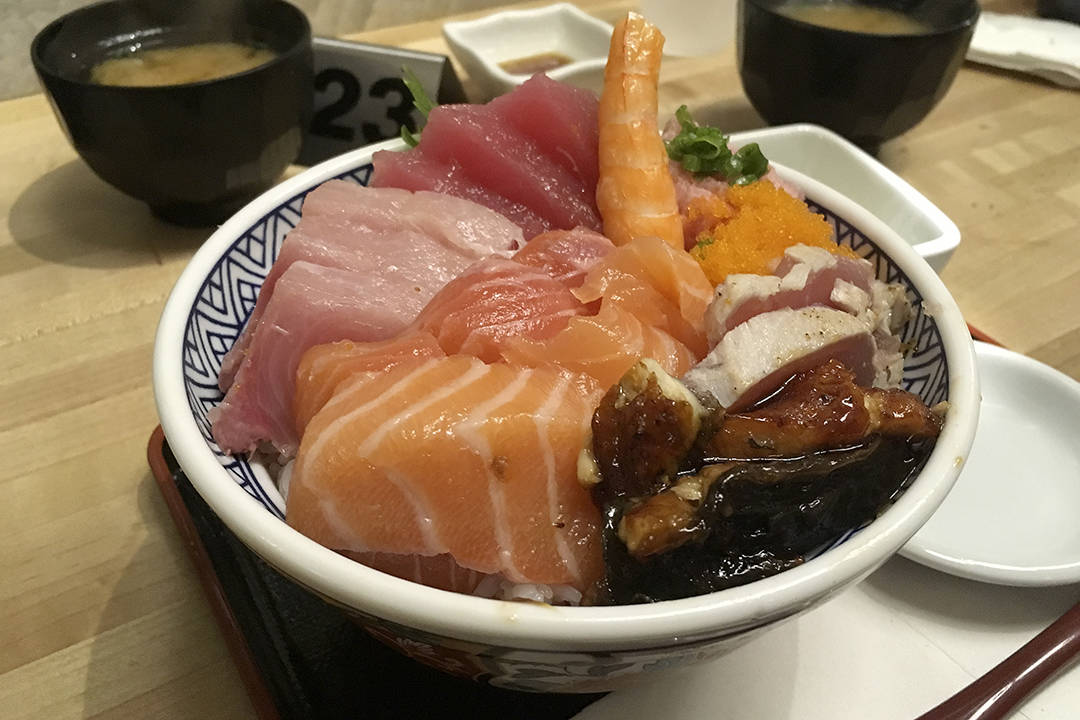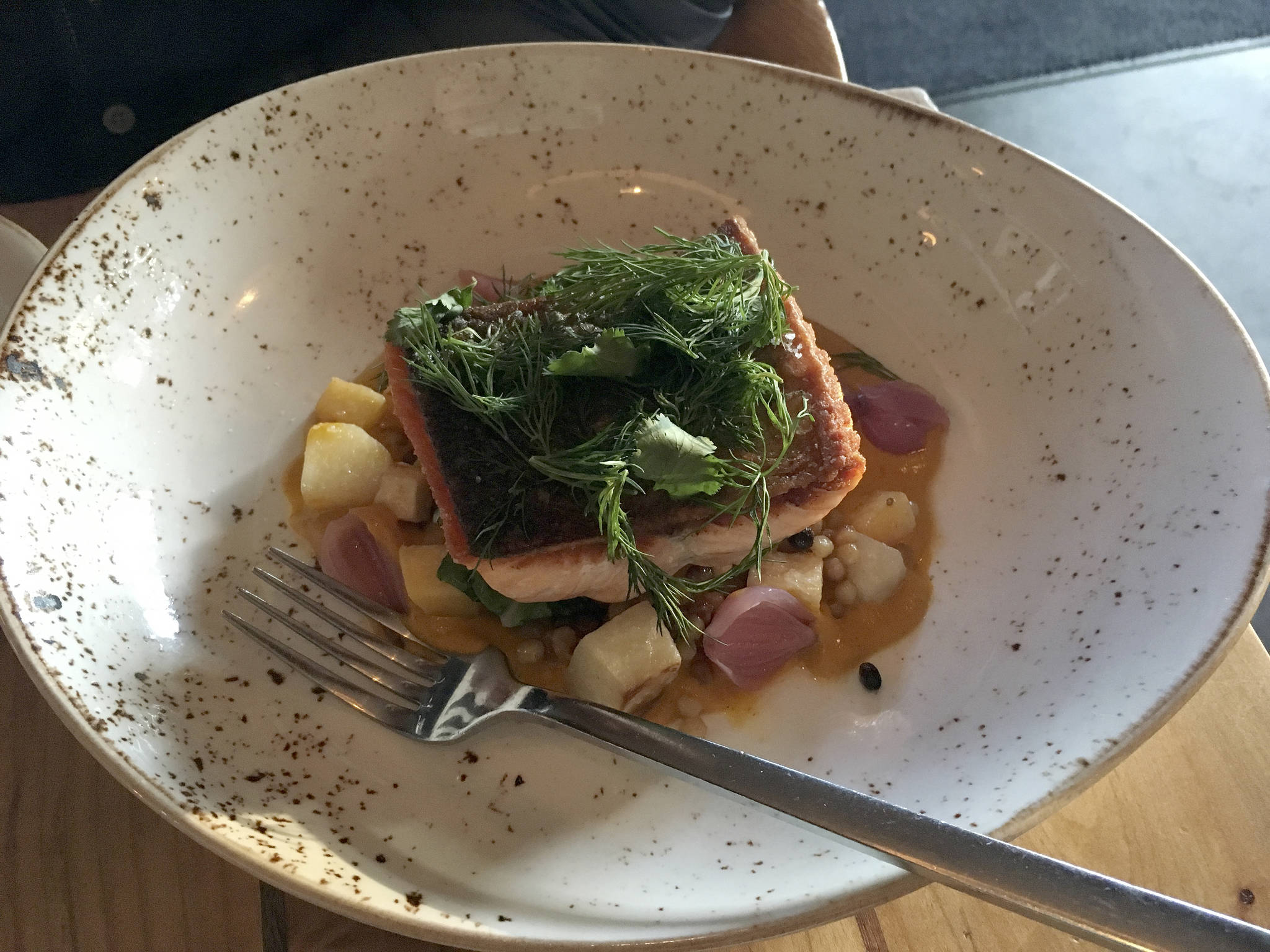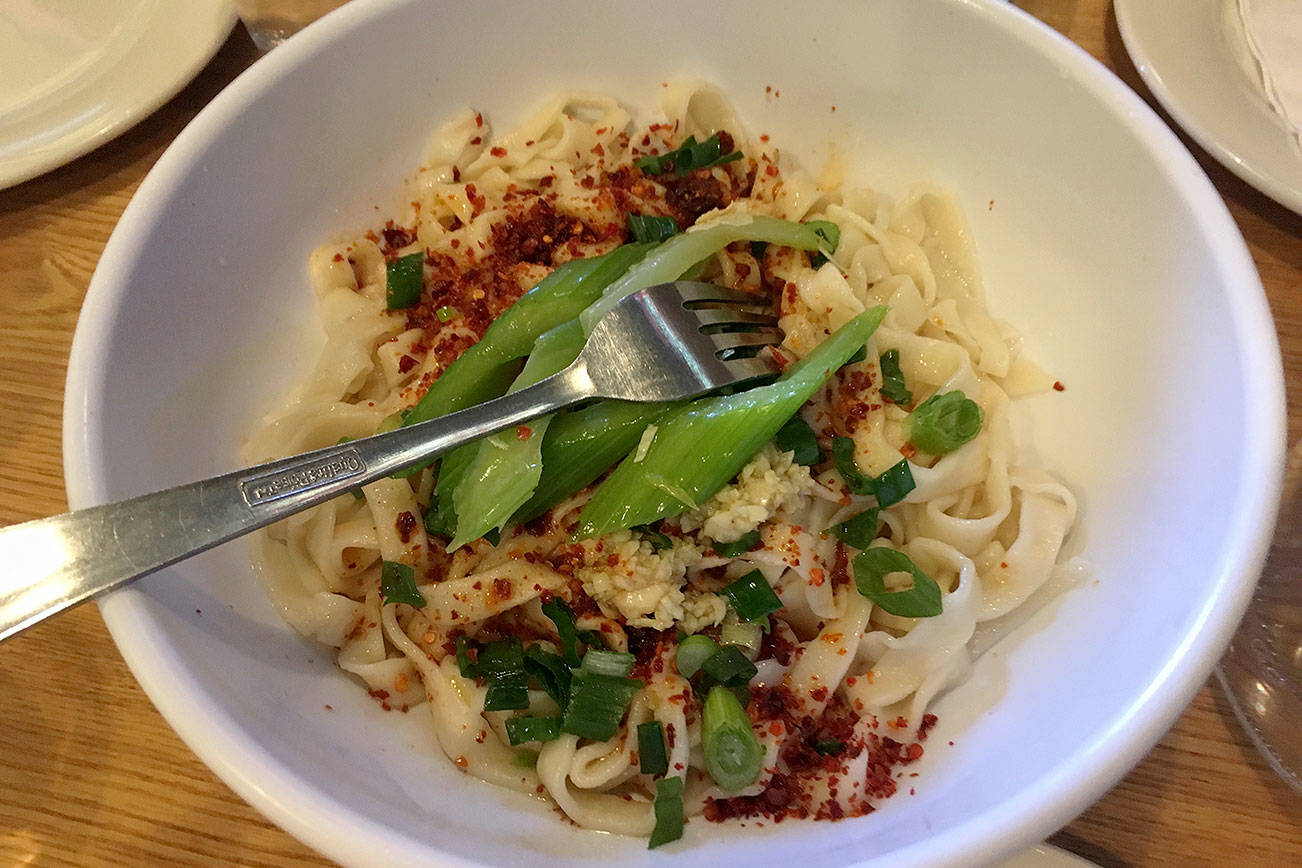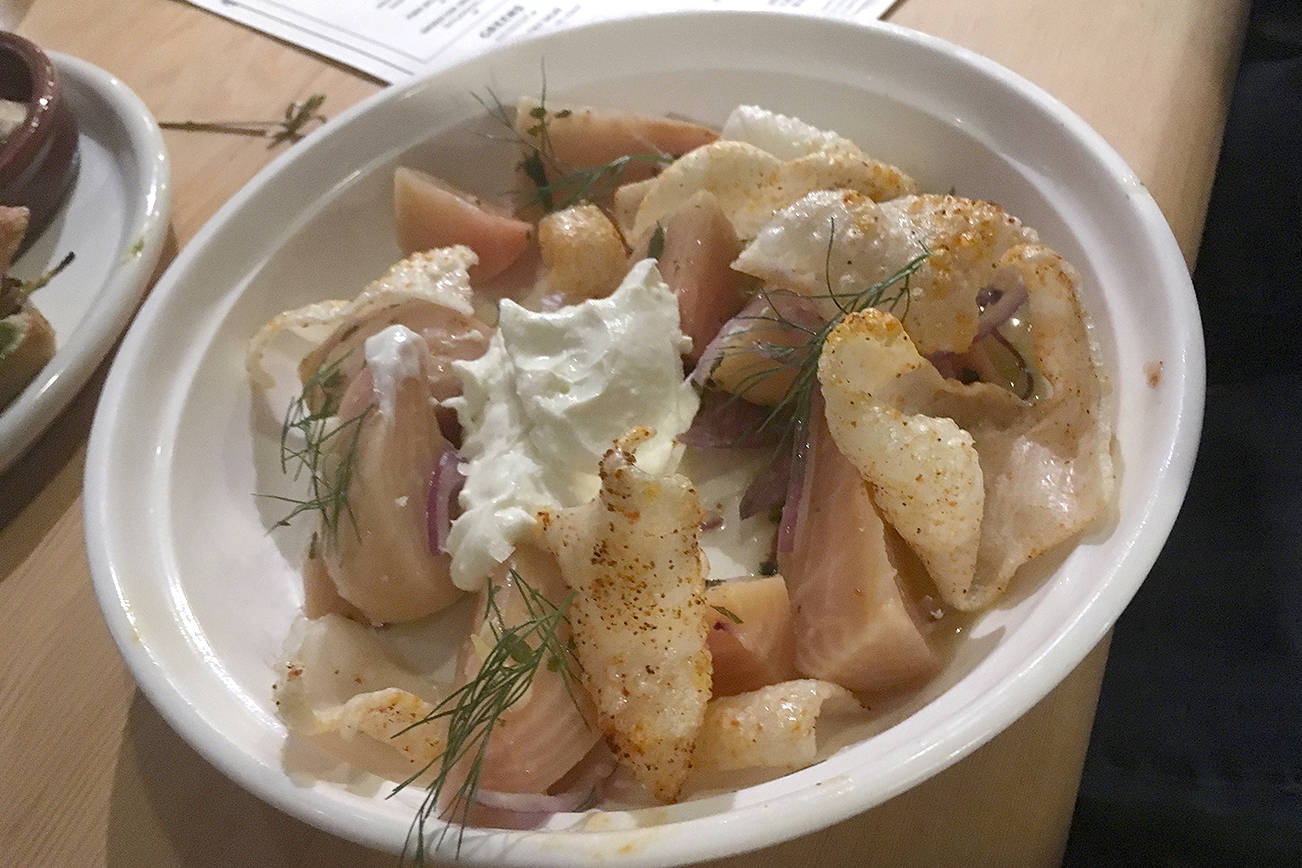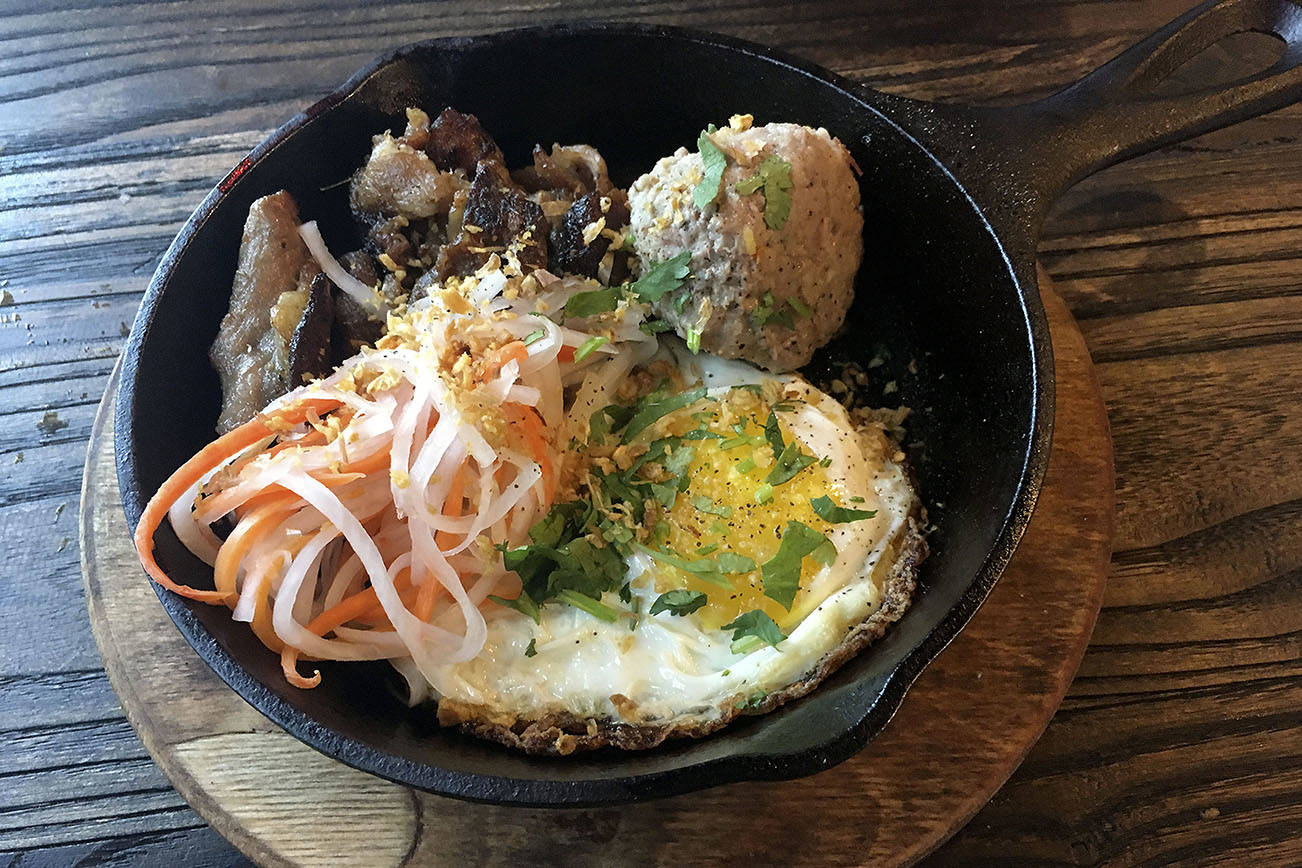I swore I wouldn’t go into another poke joint for a long time. But after hearing about Fremont Bowl, I broke my promise to myself. Well, not completely, because while poke is on offer there, so are a number of other bowls and snacks, defined by the restaurant as “Japanese Comfort Food.”
On a rainy Saturday, the place was packed, and we waited about 30 minutes, all crammed in at the front, for a seat. Here, the system is slightly different. You put your name on a list, and when it comes up, they call you to the counter where you place your order, are given a number, and then take a seat. When your order is up, it’s delivered to your table or bar seat. A kind of restaurant/fast-casual hybrid. Aesthetically, it also falls somewhere between the two, but closer to a real restaurant with blonde wood seating, subway tile, and geometric light fixtures.
There are 13 bowls to choose from, each with rice as the base. As for poke, there’s the classic version with several raw fish varieties, seaweed salad, masago (roe), and cucumber. You can also get it with just salmon or tofu. I did not try any of them but opted for their less ubiquitous choices, the other bowls or “don” as they’re referred to in Japanese. The sukiyaki beef don came layered with thinly sliced curliques of beef and onions cooked in a slightly savory, but ultimately sweet dashi broth over rice. I’ve never been a huge sukiyaki fan, so it was more or less what I expected: average, yet satisfying. Unfortunately, the beef-to-rice ratio was way off and we were quickly left with more than half a bowl of rice. This is not expensive beef; they could stand to up the portion.
The tonkatsu don (crispy pork cutlet over rice) was much less stingy, with at least 8 sizeable slices of meat neatly arranged in a line. It has a nice crisp that I expect from this dish, but was under-seasoned. That may have been a conscious decision, though, as it’s served with a dark, mysterious syrupy sauce that’s predominant note is Worcestershire. I adored it.
The chicken teri don (chicken teriyaki over rice) was surprisingly the biggest hit. While I generally dismiss teriyaki as a one-note, too-sweet Americanized Japanese dish, this one gave me second thoughts. The chicken itself had a great barbequed char, the sauce wasn’t overly cloying and was really incorporated into the meat, and the $1 option to add a spicy sauce made it even more enticing.
While we skipped poke, it didn’t seem fair to not at least try one of the bowls featuring raw fish, so we ordered the chirashi. The word chirashi means “scattered,” allowing for some variations on its contents, but, in a nutshell, it’s a traditional Japanese dish of sashimi on top of rice flavored with rice-vinegar, essentially the flavors of nigiri sushi in a bowl. Here, the perfectly seasoned rice was topped with beautiful raw slices of tuna, salmon, yellowtail, and albacore, as well as cooked freshwater eel, shrimp, a delicious, addictive heap of chopped fatty tuna, and masago with fresh wasabi. Adding to the overall freshness of the fish was a smidge of yuzu kosho to mix into your soy/wasabi dipping sauce. Yuzu kosho may be the next rage in condiments; a Japanese paste that consists of chili pepper, yuzu (Asian citrus), and salt, it’s a tangy, sweet, sour, spicy burst that enlivens your taste buds without numbing them. For $14.95, this bowl is a steal—and really, so are all the others (seafood-based ones range from $10-$16, while meat and tofu-based selections mostly go for under $10).
The restaurant also serves salads, sides, and soups. The six pieces of veggie gyoza were lightly fried and an alluring shade of golden green. I enjoyed how vegetal the filling actually was; the taste of earthy mushrooms immediately present on my palate. Best of all was the dipping sauce that came with it; it tasted like dashi with a hit of yuzu and was at once sweet and citrus-laden, a lovely and rare acidic balancing act. The nameko miso soup was full of tiny buttons of nameko mushrooms and scallions floating in that salty broth.
There’s quite a few things I didn’t get to, such as the intriguing-sounding veggie croquettes, described as fried veggie bread rolls, and other Japanese standards such as kara-age (Japanese fried chicken) and inari sushi (fried bean curd). Given the convenient location in Fremont’s increasingly popular restaurant corridor, it’s likely I’ll be back to try them, particularly when I’m in the mood for quality sushi on a budget. ■
4258 Fremont Ave N Ste #4262, 504-3095
